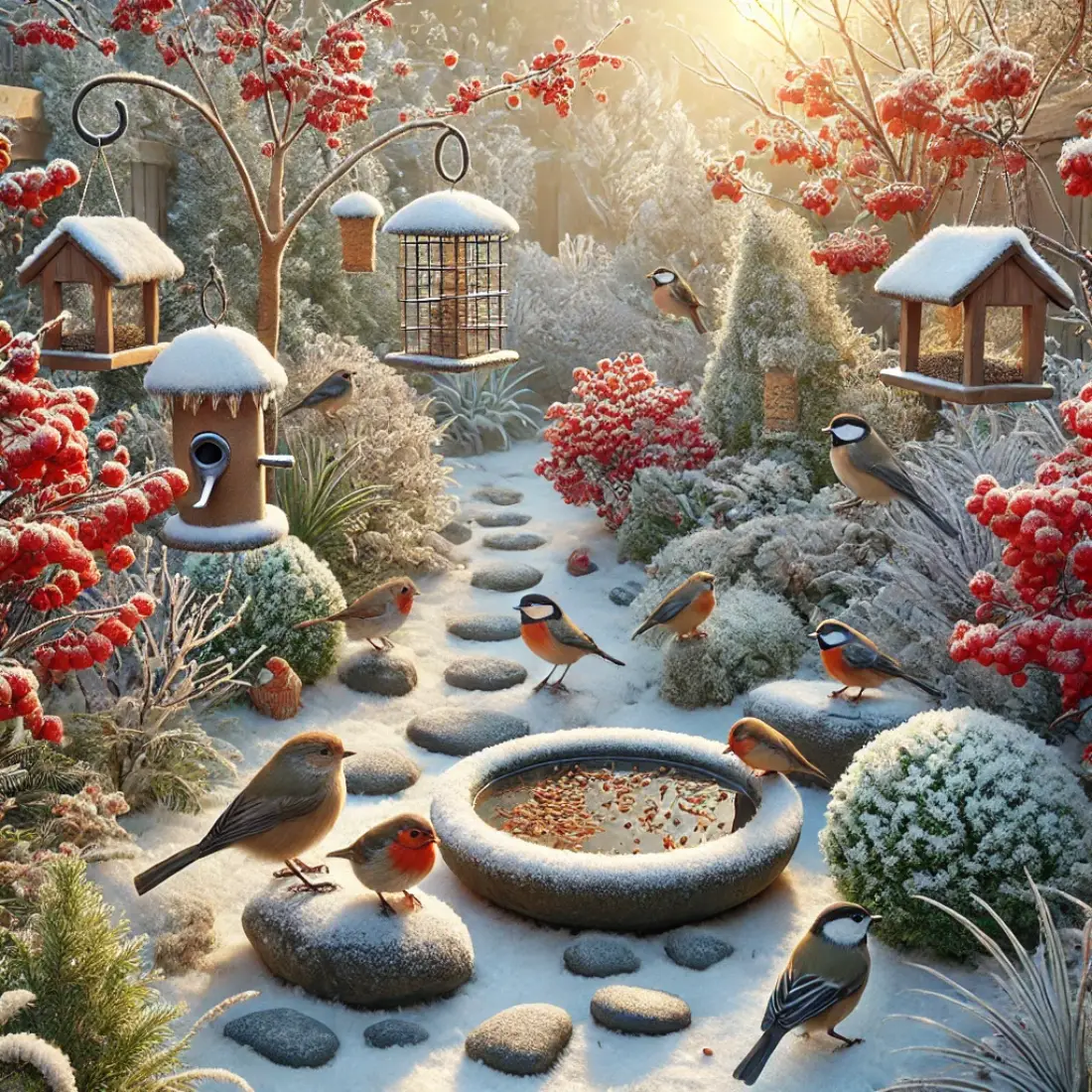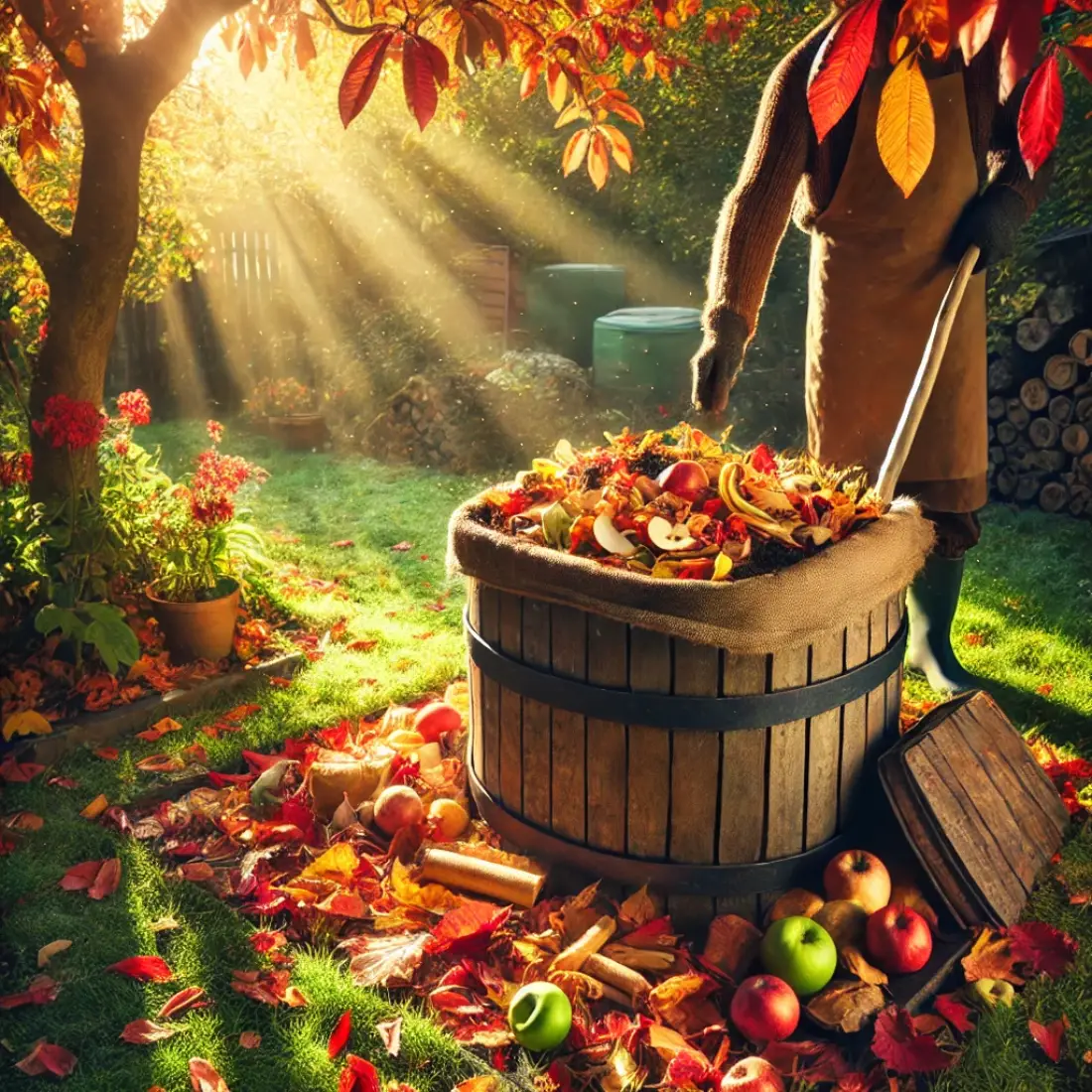Creating a bird-friendly winter garden is not just about helping wildlife—it’s a smart, natural way to control pests in your garden without chemicals. Birds are incredibly effective at managing pest populations, even during winter. With a bit of planning and the right plants, feeders, and shelter, you can transform your garden into a sanctuary for birds and a haven for beneficial biodiversity.
- Creating a bird-friendly winter garden encourages natural pest control.
- Native plants attract local bird species essential for pest management.
- Simple steps, like providing food, water, and shelter, can boost winter bird activity in your garden.
Why a Bird-Friendly Winter Garden is Essential for Pest Control
Understanding the Role of Birds in Pest Control
Birds are nature’s pest controllers. During winter, many birds feed on the eggs, larvae, and pupae of pests that might otherwise damage your garden in spring. For instance, chickadees, nuthatches, and woodpeckers actively hunt insects, helping keep pest populations low.
By attracting these birds to your garden, you’ll have an efficient pest control team on standby, reducing the need for pesticides.
How Winter Gardens Support Birds
Winter can be a harsh season for birds. With fewer natural food sources, birds struggle to find the energy they need to stay warm and active. By creating a bird-friendly winter garden, you provide critical food and shelter, making your garden a welcoming winter refuge.
In return, these birds will help manage pests, eating insects that could harm your garden later on.
Steps to Create a Bird-Friendly Winter Garden
Planting Bird-Friendly Winter Plants
One of the best ways to attract birds to your garden is by planting native plants that provide food and shelter. Look for plants that produce berries, seeds, and nuts that can sustain birds throughout winter. Some excellent choices include:
- Holly and Winterberry: Bright red berries add a beautiful winter touch and provide nourishment for birds.
- Juniper and Cedar: These evergreens provide shelter and tasty berries.
- Pine and Spruce: These offer both seeds and dense foliage for protection against the cold.
Native plants are especially beneficial because local bird species recognize them as food sources, making them a natural attraction for feathered friends.
Providing Shelter and Nesting Areas
Birds need protection from the elements, especially during colder months. Shrubs, evergreens, and dense foliage plants make excellent natural shelters. You can also add man-made options like:
- Birdhouses: Place birdhouses in areas sheltered from wind. Different species prefer various nesting styles, so research what works best for local birds.
- Cavity-Nesting Structures: Woodpeckers and nuthatches enjoy cavity-nesting, so structures mimicking tree holes can be highly attractive to these birds.
By giving birds safe, predator-free spots to rest, you encourage them to stick around and help with pest control.
Setting Up Feeders and Types of Bird Feed
Supplementing natural food with bird feeders is a great way to keep birds well-fed and active during winter. Here are a few types of feeders and foods that work well for cold months:
- Tube Feeders: Ideal for small birds, tube feeders keep seed dry and accessible.
- Hopper Feeders: Larger birds like these feeders, which can hold a variety of seeds.
- Suet and Mealworms: High-protein food like suet and mealworms provide extra energy, which is vital for birds in cold weather.
Strategically placing feeders near your garden beds can encourage birds to hunt for pests in nearby areas.
Offering a Water Source
In winter, access to fresh water is crucial. Natural water sources often freeze, so adding a heated bird bath or a bowl of fresh water in a sheltered area can help attract birds. Providing a steady water source will keep birds in your garden and active, meaning they’ll be on hand to manage pests for you.
Maintaining a Bird-Friendly Garden Through Winter
Minimizing Disturbance and Avoiding Chemicals
To keep your winter garden bird-friendly, avoid excessive pruning and maintenance that can disturb birds or their food sources. Birds often rely on insects hiding in garden debris, so leaving some fallen leaves or compost piles undisturbed can help.
Avoid using pesticides and herbicides, as they can harm birds directly or reduce the insects they rely on for food. Instead, let the birds manage pest populations naturally.
Compost and Mulch: Creating Microhabitats for Insects
Composting and mulching are not just great for soil health—they also create overwintering spots for insects that birds eat. A compost pile can be a valuable food source for birds, as it often harbors grubs, larvae, and other insects. Mulched garden beds offer similar benefits by providing an insulating layer where small insects can hibernate, making it easier for birds to forage.
Benefits of a Bird-Friendly Winter Garden Beyond Pest Control
Enhancing Biodiversity and Garden Health
Attracting birds to your garden contributes to a balanced, biodiverse ecosystem. Birds not only control pests but also aid in pollination and seed dispersal. This natural biodiversity strengthens your garden’s resilience, making it healthier and less reliant on chemicals or artificial interventions.
Creating a Year-Round Sanctuary for Birds
Once your garden becomes a safe space for birds in winter, you can easily transition it to a year-round habitat. Providing seasonal foods, nesting spots, and water sources will ensure birds return to your garden all year. This continuous presence keeps pest populations in check, providing lasting ecological benefits.
FAQs about Creating a Bird-Friendly Winter Garden
What are the best plants for attracting birds to my winter garden?
Native plants like berry-producing shrubs (such as holly, winterberry, and juniper) and dense evergreens (like pine and cedar) are ideal for attracting birds during winter.
Which bird species are most effective for pest control in winter?
Chickadees, woodpeckers, and nuthatches are particularly effective for pest control, as they actively forage for insects and larvae throughout winter.
Do I need a heated bird bath in winter?
A heated birdbath can be extremely helpful. Birds need water even in winter, and having a water source can make your garden more attractive.
What types of bird food are best for winter feeding?
High-protein options like suet, mealworms, and black oil sunflower seeds are excellent for keeping birds healthy and energetic during cold months.
How can I prevent squirrels from taking bird feed?
Using squirrel-proof feeders and placing feeders away from trees or structures can help prevent squirrels from stealing bird food.










